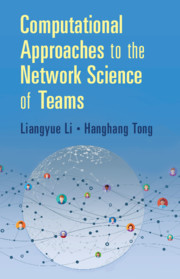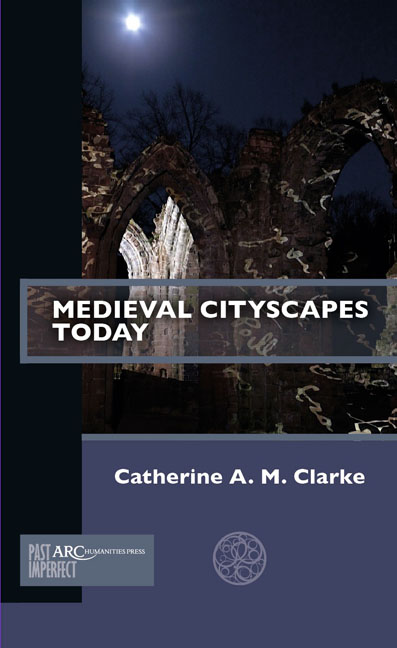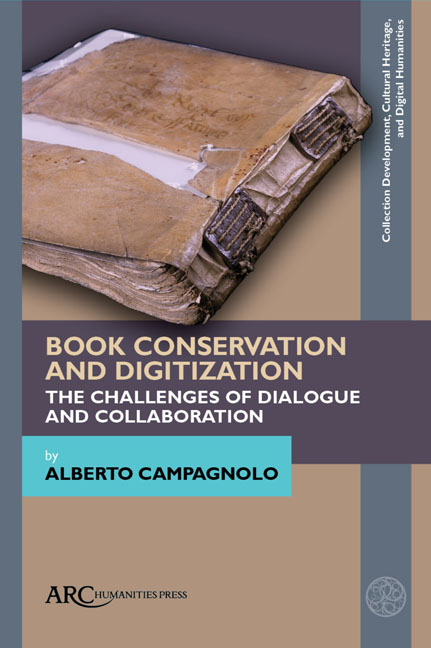Refine search
Actions for selected content:
48532 results in Computer Science
16 - Field Trials and Tests on Ultra-dense Networks
- from Part IV - Field Trials and Tests
-
- Book:
- Ultra-dense Networks
- Published online:
- 12 October 2020
- Print publication:
- 26 November 2020, pp 303-314
-
- Chapter
- Export citation
1 - Computational Neuroscience
- from Part I - Introduction
-
- Book:
- Data-Driven Computational Neuroscience
- Published online:
- 05 November 2020
- Print publication:
- 26 November 2020, pp 3-50
-
- Chapter
- Export citation
5 - Performance Evaluation
- from Part III - Probabilistic Inference
-
- Book:
- Data-Driven Computational Neuroscience
- Published online:
- 05 November 2020
- Print publication:
- 26 November 2020, pp 201-225
-
- Chapter
- Export citation
Part IV - Unsupervised Classification
-
- Book:
- Data-Driven Computational Neuroscience
- Published online:
- 05 November 2020
- Print publication:
- 26 November 2020, pp 435-436
-
- Chapter
- Export citation
Part II - Physical Layer Design
-
- Book:
- Ultra-dense Networks
- Published online:
- 12 October 2020
- Print publication:
- 26 November 2020, pp 35-36
-
- Chapter
- Export citation
Jets and differential linear logic
-
- Journal:
- Mathematical Structures in Computer Science / Volume 30 / Issue 8 / September 2020
- Published online by Cambridge University Press:
- 24 November 2020, pp. 865-891
-
- Article
- Export citation
Entamoeba histolytica protein CaBP3 uses a calcium dependent nuclear localisation pathway in mammalian cells
-
- Journal:
- Experimental Results / Volume 1 / 2020
- Published online by Cambridge University Press:
- 24 November 2020, e53
-
- Article
-
- You have access
- Open access
- HTML
- Export citation
Narrative review and meta-analysis of MALL research on L2 skills
-
- Article
-
- You have access
- Open access
- HTML
- Export citation

Adaptation in the Age of Media Convergence
-
- Published by:
- Amsterdam University Press
- Published online:
- 21 November 2020
- Print publication:
- 01 October 2019
-
- Book
- Export citation

Computational Approaches to the Network Science of Teams
-
- Published online:
- 20 November 2020
- Print publication:
- 03 December 2020

Medieval Cityscapes Today
-
- Published by:
- Amsterdam University Press
- Published online:
- 20 November 2020
- Print publication:
- 30 April 2019
-
- Book
- Export citation

Book Conservation and Digitization
- The Challenges of Dialogue and Collaboration
-
- Published by:
- Amsterdam University Press
- Published online:
- 20 November 2020
- Print publication:
- 31 May 2020
-
- Book
- Export citation

Digitizing Medieval Manuscripts
- The St. Chad Gospels, Materiality, Recoveries, and Representation in 2D and 3D
-
- Published by:
- Amsterdam University Press
- Published online:
- 20 November 2020
- Print publication:
- 31 August 2019
-
- Book
- Export citation
MARKOV CHAIN METHOD FOR COMPUTING THE RELIABILITY OF HAMMOCK NETWORKS
-
- Journal:
- Probability in the Engineering and Informational Sciences / Volume 36 / Issue 2 / April 2022
- Published online by Cambridge University Press:
- 20 November 2020, pp. 276-293
-
- Article
- Export citation
PRICING FORMULA FOR EXCHANGE OPTION BASED ON STOCHASTIC DELAY DIFFERENTIAL EQUATION WITH JUMPS
-
- Journal:
- Probability in the Engineering and Informational Sciences / Volume 36 / Issue 2 / April 2022
- Published online by Cambridge University Press:
- 20 November 2020, pp. 548-563
-
- Article
- Export citation
NLE volume 26 issue 6 Cover and Back matter
-
- Journal:
- Natural Language Engineering / Volume 26 / Issue 6 / November 2020
- Published online by Cambridge University Press:
- 20 November 2020, pp. b1-b2
-
- Article
-
- You have access
- Export citation
DUELING BANDIT PROBLEMS
-
- Journal:
- Probability in the Engineering and Informational Sciences / Volume 36 / Issue 2 / April 2022
- Published online by Cambridge University Press:
- 20 November 2020, pp. 264-275
-
- Article
- Export citation
NLE volume 26 issue 6 Cover and Front matter
-
- Journal:
- Natural Language Engineering / Volume 26 / Issue 6 / November 2020
- Published online by Cambridge University Press:
- 20 November 2020, pp. f1-f2
-
- Article
-
- You have access
- Export citation
Preface
-
- Journal:
- Natural Language Engineering / Volume 26 / Issue 6 / November 2020
- Published online by Cambridge University Press:
- 20 November 2020, p. 593
-
- Article
- Export citation
RSL volume 13 issue 4 Cover and Back matter
-
- Journal:
- The Review of Symbolic Logic / Volume 13 / Issue 4 / December 2020
- Published online by Cambridge University Press:
- 20 November 2020, pp. b1-b2
- Print publication:
- December 2020
-
- Article
-
- You have access
- Export citation
